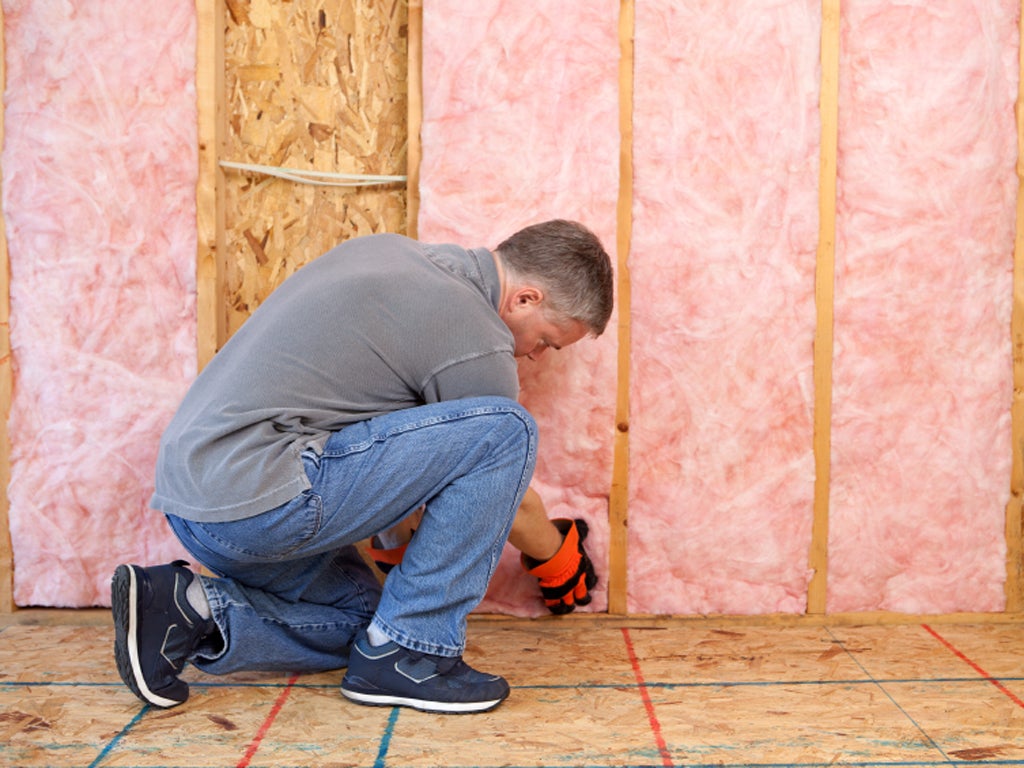
Your support helps us to tell the story
From reproductive rights to climate change to Big Tech, The Independent is on the ground when the story is developing. Whether it's investigating the financials of Elon Musk's pro-Trump PAC or producing our latest documentary, 'The A Word', which shines a light on the American women fighting for reproductive rights, we know how important it is to parse out the facts from the messaging.
At such a critical moment in US history, we need reporters on the ground. Your donation allows us to keep sending journalists to speak to both sides of the story.
The Independent is trusted by Americans across the entire political spectrum. And unlike many other quality news outlets, we choose not to lock Americans out of our reporting and analysis with paywalls. We believe quality journalism should be available to everyone, paid for by those who can afford it.
Your support makes all the difference.There are many ways to make your home more energy-efficient and reduce your heating bill. Insulated homes are comfortable homes. In an adequately insulated home, the temperature is constant throughout each room and walls, ceilings and flooring remain warm in the winter and cooler in the summer months.
Loft insulation
Loft insulation works by preventing heat from escaping through the roof. It’s relatively cheap and quick to install. One of the most popular insulation materials is glass wool, which costs between £300 and £500 for both the materials and installation process. The exact amount will vary according to the size of your loft. Investing in the insulation will save you around £140 a year for 40 years – leaving you £5,600 in pocket. As a result of your savings, the payback time will also be very quick.
If you want to use your loft as extra living space rather than storage, you can insulate the loft roof rather than the floor. In this case, insulation boards can be fitted between the roof rafters and covered with plasterboard. The ideal thickness of loft insulation is 270mm, so if you already have insulation in place, it’s a good idea to check its thickness. Any thinner than the recommended 270mm and you could make further savings by bulking it up.
Wall insulation
Around 35 per cent of heat is lost through the external walls of your home. By installing cavity wall insulation, your home will heat up quicker and stay warmer for longer. The process involves drilling holes into the walls of your home and filling the space with insulation materials, such as glass fibre wool. This procedure is suitable for the vast majority of buildings built after 1920 which have a cavity separating the twin exterior walls.
After deductions, cavity wall insulation could typically save you £135 a year on an initial cost of £250. This translates into a payback period of only two years. Government grants are also available, homeowners may be eligible for either reduced or free insulation work.
Floor insulation
Installing insulation foam between the joists underneath the floor will trap heat and stop cold air from rising up through the gaps. Mineral wool and polystyrene slabs are typically used to insulate floors in this way. This method is particularly suitable for floorboards and laminate flooring as they allow more cold air to rise than carpeting. Average pricing starts at £40 per m² and the work can save you £60-£70 annually, while reducing 240-340kg of carbon dioxide emissions.
Floor insulation is not only a good stand alone investment; it’s also an essential accompaniment to underfloor heating. Heating your floor from underneath will evenly distribute heat throughout your home rather than providing localised heat like that of a wall radiator. The initial cost is high and varies widely depending on whether you opt for an electric or wet system but this is balanced out by efficiency. It runs one to two degrees lower than the traditional wall radiator, translating into a £20 annual saving.
Eco insulation
Insulating with sheep’s wool rather than glass wool is kinder to the environment. The resource may be more costly at £20 per sqm, but it provides the same quantity of insulation while remaining renewable and requiring little energy to produce. If your home is already fitted with adequate loft, wall and floor insulation, you may wish to opt for 100 per cent wool carpets when carrying out future interior improvements. These provide quick and easy insulation while containing natural dyes with no trace of harmful substances.
Join our commenting forum
Join thought-provoking conversations, follow other Independent readers and see their replies
Comments